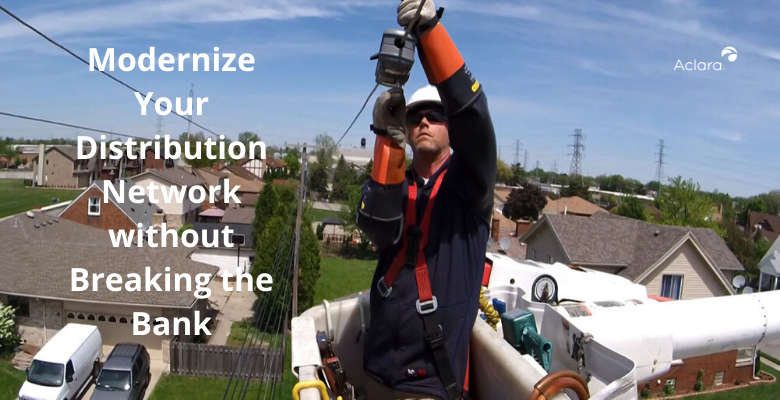We often take it for granted that when we flick a switch or push a button, the lights will automatically turn on, phones will recharge and computers will power up. We also expect a continuous and reliable delivery of electricity to our homes and businesses. For the most part, this is the norm. However, given the sheer size of our distribution network and the condition of our infrastructure, it is not surprising that, from time to time, things can go wrong.
Equipment failures and weather conditions can play havoc with network reliability. So, having up-to-date information and a high-level view of exactly what is happening on the network is crucial for distribution engineers to make informed decisions. It allows them to better prioritize aging equipment replacement, identify worst-performing circuits, and understand network load behavior to prevent power failures and improve power quality issues.
About a year ago, DTE Energy, one of the nation’s largest diversified energy companies − responsible for delivering electricity to 2.1 million customers − experienced a utility company’s worst nightmare: a major fire broke out at one of its distribution substations. A substation is a fundamental component of the system’s network and a major network asset. It transfers electricity from the transmission system to the distribution circuits and allows power flow to thousands of homes and businesses. A substation fire can cause an entire section of an electricity network to fail, leaving homes and businesses in the dark. As well as paralyzing entire communities, it can also be costly to local industrial and commercial businesses and facilities. It can even cause government buildings to shut down, as witnessed last year in our nation’s capital. A 2013 White House report shows that the average cost of power outages to the economy is between $18 billion to $33 billion a year.
Swift Power Restoration
Once a fire is contained, prompt power restoration is a utility’s top priority. In the case of DTE, over 10,000 of its customers were affected by this event. The company responded quickly, transferring some of its customers to alternative power lines and setting up temporary substations. However, despite these efforts, many of its customers remained without power. To make matters worse, a heatwave was forecast that would leave homes and businesses in the dark without any means of cooling off.
As the situation escalated, DTE’s engineers realized there was an urgent requirement for a flexible and sustainable solution to handle this crisis. They identified the main areas of the network where they had lost situational awareness and required load monitoring and decided to deploy a technology used at the time for a Clinton GlobaI Initiative (CGI) project: smart grid sensors. Within several hours, the line sensors were installed by a small team of linemen and immediately started sending near real-time loading information back to the network operators. With the Aclara Grid Monitoring Platform in place within hours, DTE operators regained situational awareness and were able to make informed decisions and prevent further outages from happening.
“Within hours, and using only two line crews, we had the situational awareness. We needed to make informed decisions on the best way to manage the emergency and restore power to our customers”
Richard Mueller, Supervising Engineer, Power Systems Technology, DTE Energy
Affordable Network Monitoring
This story serves as one example of just how challenging the job of utility companies can be. They are mandated to modernize what is essentially the largest machine every built – the electricity distribution network – when the demands made upon our aging network infrastructure have grown significantly from a time when the grid was initially built. Emergency situations need to be resolved quickly; customers supplied with the utmost reliable service while embracing future needs like the integration of renewables. All of this often has to be carefully managed with limited resources. Muller said:
“We needed the ability to modernize and monitor our network in an affordable way and effectively utilize our resources to improve restoration time.”
Network monitoring may sound like a basic, simple task to accomplish, but it requires extensive engineering work with careful, costly, and lengthy planning that can take years to achieve. Once equipment and communications systems are deployed and set-up, further technical challenges often lay ahead including the seamless integration of all devices into a complex IT architecture − a daunting task for many utility engineers.
Integrating Line Sensors Data with Third Parties
While the substation fire was a disastrous loss for DTE, the overhead line sensors proved invaluable and were added to the company’s asset portfolio. DTE’s team of engineers realized that by integrating the data from the Aclara Grid Monitoring Platform, SMS software and Predictive Grid® Analytics capabilities with its ABB Tropos wireless network architecture, it could leverage the platform to expand network monitoring to other areas of the network at a fraction of the cost to deploy SCADA-based systems.
This blog was originally published in 2017 and was updated on July 11, 2020



